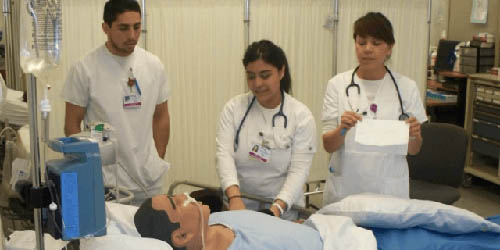There are various modes of payments for dental hygienists including salary based earnings, payment depending on performance and hourly payments.
A Closer Look at How Dental Hygienists are Paid
· Hourly Payment with an Additional Commission- this is where the dental hygienist is entitled to a monthly salary with an additional incentive for their efficient performance.
· Straight Commission- this type of payment mode is helpful in cases where the dental hygienist is placed in a situation that may carry some financial risk. When a new dental clinic opens and they are looking to protect their capital, the owner may offer a commission based payment structure to the hygienist. With this type of financial arrangement, the hygienist is in a position of earning up to 33% of the hygiene production which is higher compared to hourly payment mode.
· Hourly with a Bonus Payment Mode- in this case the dental hygienist is offered bonuses which in most cases is 10-20 percent of the total services offered and billed for. The bonuses act as an incentive to motivate the hygienist to improve her efficiency.
Latest National Statistics on Dental Hygienist Compensation
In statistics released in 2015 by the Bureau of Labor Statistics, the median salary of a dental hygienist was $72,330 with the best-paid pocketing $97,390 and the lowest paid taking home an average of $49,190. Considering these statistics, dental hygienists have an attractive starting salary. This is especially true for hygienists who work part-time; just under 50% of hygienists don't work full-time.
The Department of Labor states that the ambulatory healthcare service in the dental industry was the best-paid department. Practitioners in this department earned a salary of $83,360 annually.
Geographical Compensation for Dental Hygienists
Geographical location also determines how much a dental hygienist makes with some states paying more than others do. In the District of Columbia, for instance, the average annual salary for a full-time hygienist is currently $93,920, followed by Washington, which pays an average of $92,610.
Dental hygienists practicing in metropolitan areas of California State including Sacramento & San Francisco are compensated more than the rest of the state. Other metropolitan areas of the state that enjoy better compensation include Corvallis, Santa Cruz, and Oregon. In Washington, the Mount Vernon area hygienists enjoy better compensation too.
Compensation in California
Dental hygienists in California are most often paid either in hourly or monthly basis. The hourly wages start from $32.17 up to $58.53. The median hourly rate in this case being $46.45. The typical average dental hygienist salary in the State ranges from $66,910 going up to $121,730. The average salary of a full-time hygienist, as of 2015, is $96,910.
Dental Hygiene Educational Requirements
To venture in the field, a student is required to hold a degree in dental hygiene. Additionally, each state requires that every dental hygienist be licensed. Other requirements, though not a mandatory, are certificates, bachelor’s and master’s degrees.
To work in a private dental clinic, a hygienist is required to possess at least an associate degree or certificate in dental hygiene. For students interested in working in research, teaching, clinical practice, or private or public health programs, a master's or bachelor’s degree is usually required.











